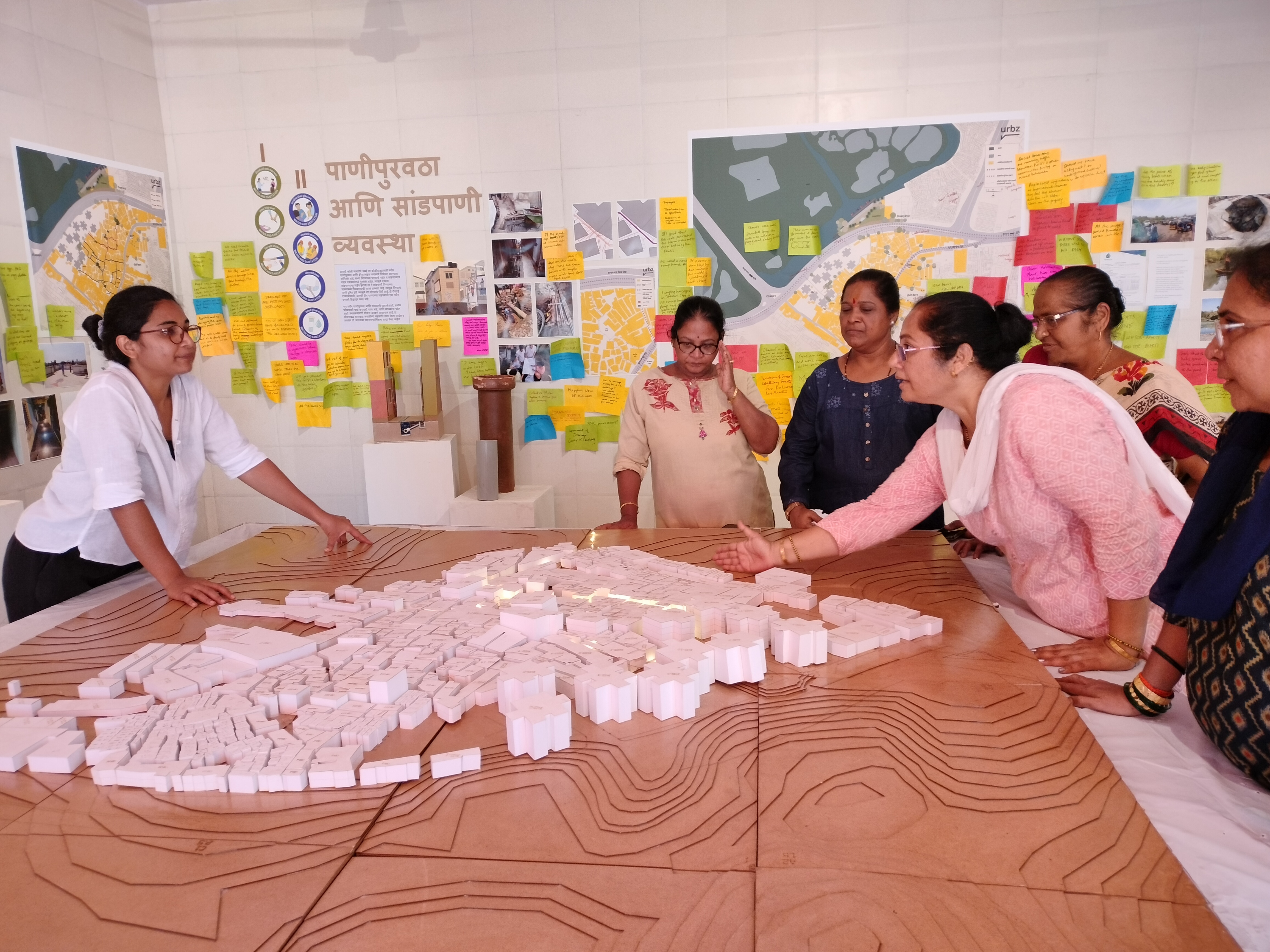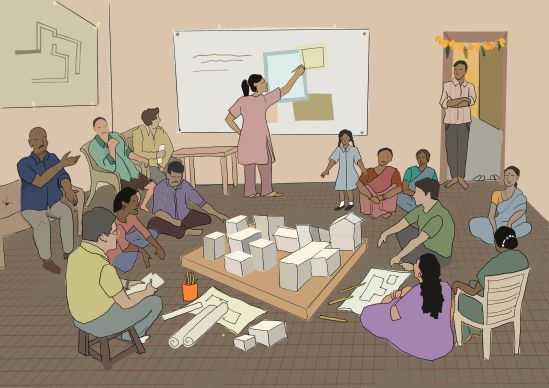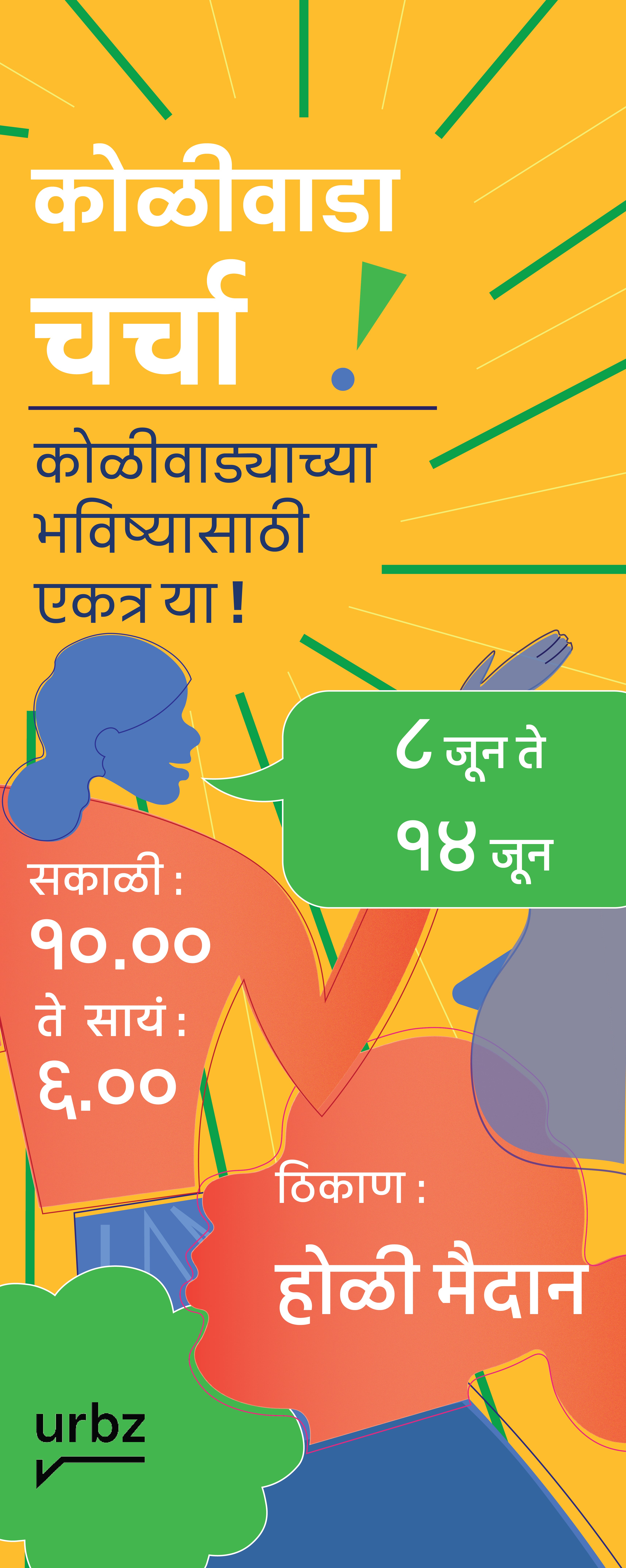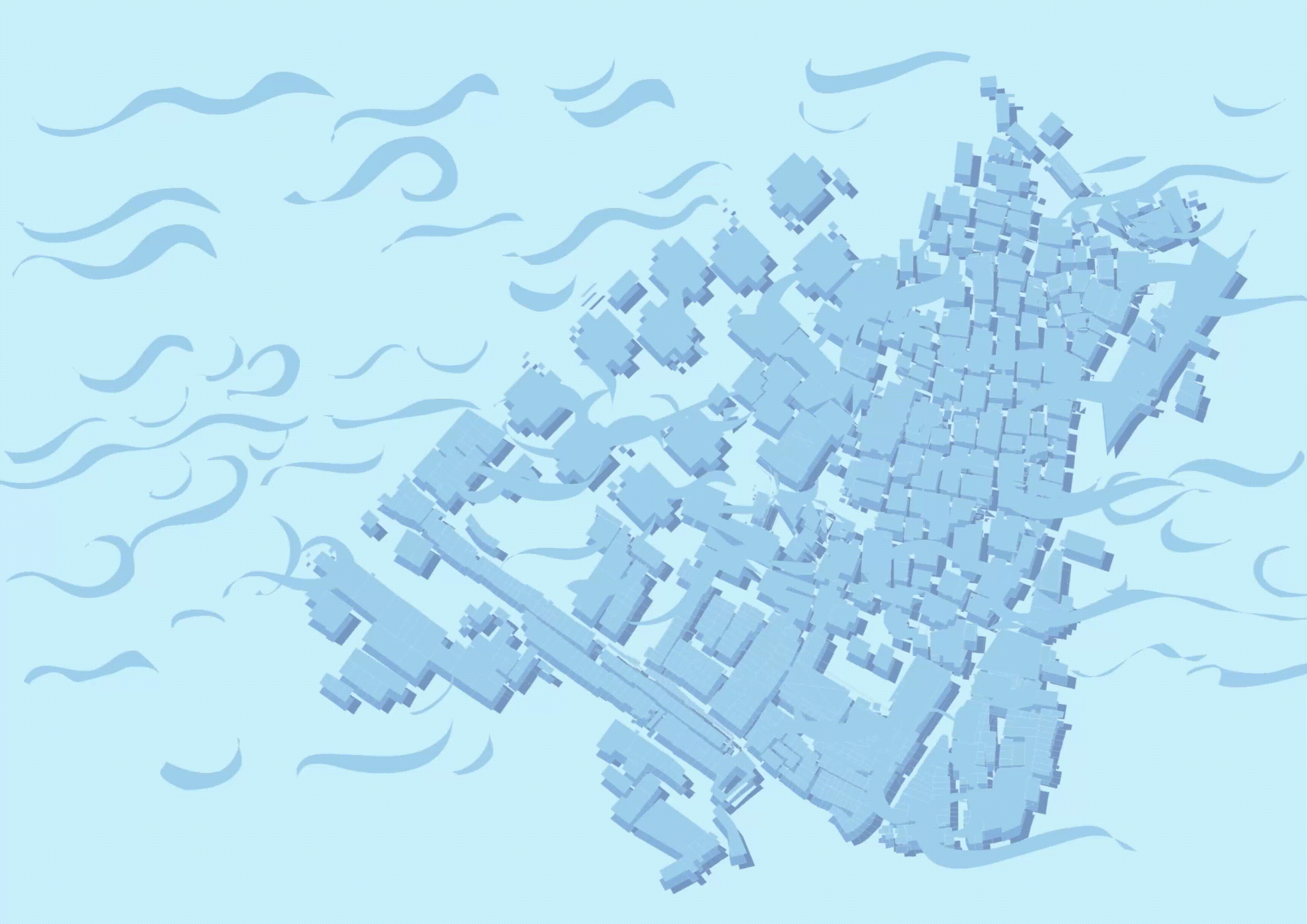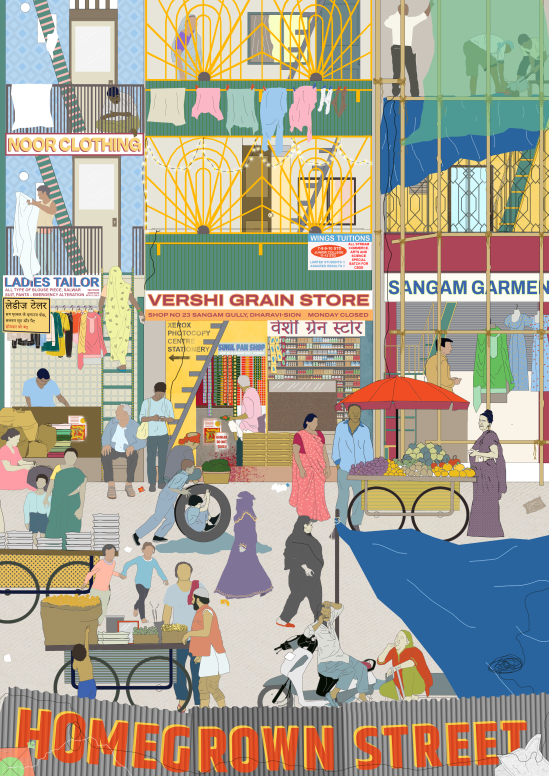26 result(s)
Spontaneous workshopping through a 10-day-long Exhibition featuring community projects as part of the ABCD of Dharavi Koliwada
We have spent the last fifteen years in the neighbourhood of Dharavi, actively participating in the user-driven evolution of its material and social life. This has given us the confidence to conceptualise and embark on a project called “The ABCD of Dharavi Koliwada”. This article outlines the vision for the project.
Koliwada Charcha is a week-long event with an interactive exhibition format, residents who visit will give feedback and comments about the 4 interventions planned for their neighbourhood. These interventions were identified by speaking with various stakeholder groups from Dharavi Koliwada, including the Dharavi Koli Jamat. The projects act as triggers to start thinking and strategising about an alternative development model for Koliwada, as part of the Action Based Comprehensive Development plan for Koliwada, or the ABCD.
Koliwada's are fishing hamlets in Mumbai city and unlike most settlements, they extend beyond terrestrial boundaries. The waters of rivers, creeks and seas, all form part of an amphibious habitat that is integral and deeply familiar to the Kolis.
We are taking the Design Comes as We Build project to the next level - the Homegrown Street!
Two short videos present the Homegrown Street Project in Sangam Gully, Dharavi, Mumbai.
On how self-built structures in cities claim legitimacy bit by bit - A comparison between Mumbai and Philadelphia
In a global context, populations marginalized because of race, class, gender, creed, etc. are those most incessantly stripped of this right to design the city in their own image within formalized constraints. In this way, the “informal” urban process of self-construction is inherently a product of this same marginality that excludes these groups from “formalized” city-making.
